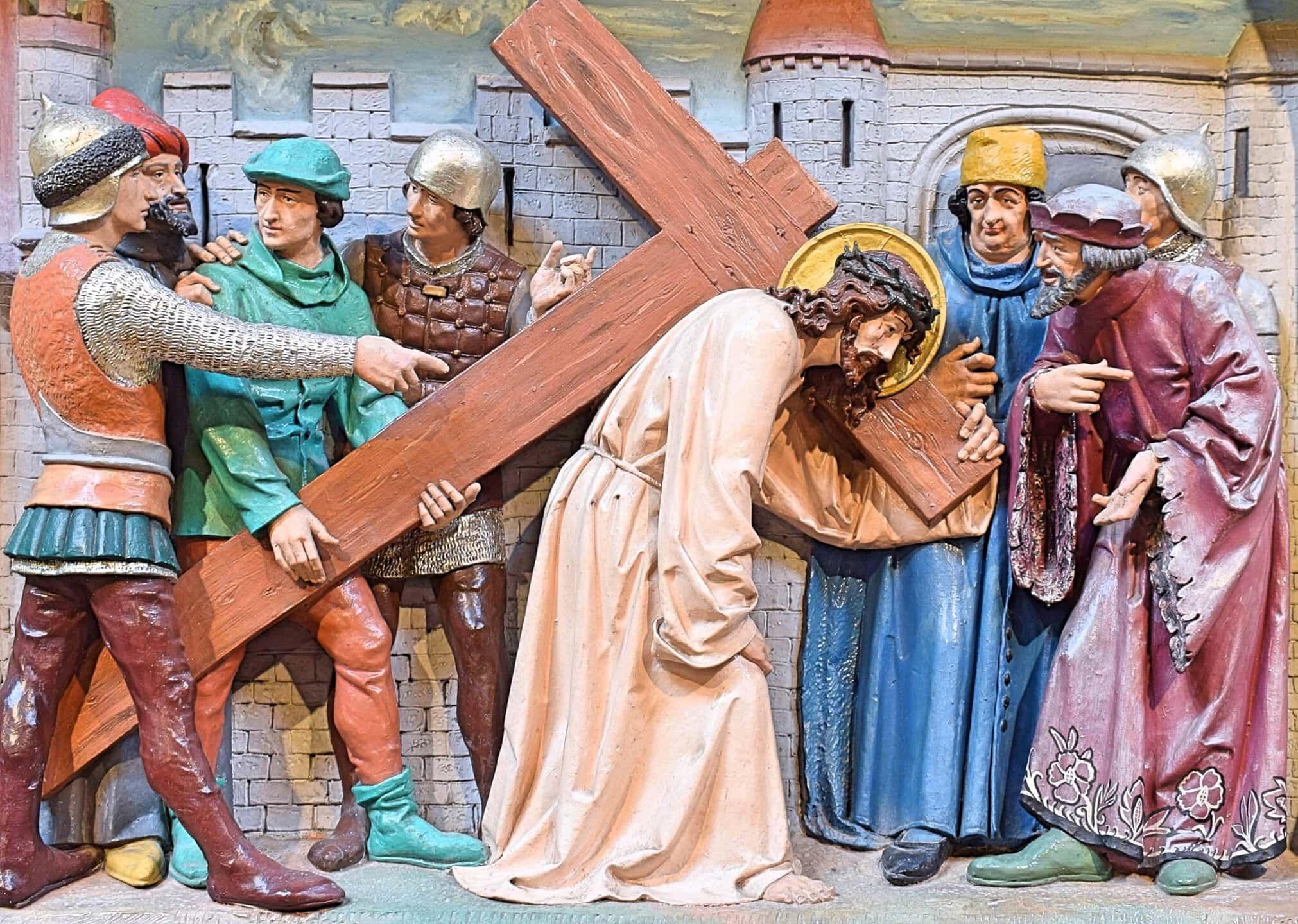Forms of Popular Piety | Religion, Philosophy & Ethics for GCSE/IGCSE - Year 11 PDF Download
Introduction
Piety refers to a deep devotion to God. In the Catholic Church, believers express this devotion through various practices known as forms of piety. Some of these practices are observed regularly, while others are tied to specific times in the Church’s liturgical calendar. Two prominent forms of piety for Catholic Christians are the Rosary and the Stations of the Cross.
The Rosary
What is the Rosary?
The Rosary is a cherished Catholic prayer practice that combines the recitation of specific prayers with meditation on key moments in the lives of Jesus and his mother, Mary. Catholics use a string of rosary beads to keep track of the prayers they recite. The beads are organized into sections, each corresponding to a set of prayers, with one prayer assigned to each bead. These sets of prayers are referred to as decades of the Rosary.
Each decade includes:
- One Our Father prayer
- Ten Hail Mary prayers
- One Glory Be prayer
Additional prayers incorporated into the Rosary include the Sign of the Cross and the Apostles’ Creed.
Importance of the Rosary
The Rosary holds profound significance for Catholics, serving as a powerful tool for spiritual growth and connection with God. Its importance lies in the following:
- It recalls the pivotal events in the history of the Catholic faith, keeping these sacred moments alive in the hearts of believers.
- Praying the Rosary demonstrates a believer’s commitment and devotion to their faith.
- It fosters a closer relationship with God through focused prayer and reflection.
- It provides a space for personal contemplation, allowing individuals to deepen their spiritual lives.
- It enhances understanding of the Catholic faith by encouraging meditation on its core mysteries.
- When prayed in a group, the Rosary strengthens the sense of community among believers, uniting them in shared devotion.
The Stations of the Cross
What are the Stations of the Cross?
- The Stations of the Cross consist of 14 images depicting the events of Jesus’ crucifixion, from his condemnation to his burial. The first station portrays Jesus being sentenced to death by Pontius Pilate, the Roman governor.
- Subsequent stations illustrate moments such as Jesus carrying his cross, falling under its weight, meeting his mother Mary, and being nailed to the cross. The final station depicts Jesus being laid in the tomb after his death.
- During the season of Lent, particularly on Good Friday during Holy Week, Catholics participate in a spiritual practice known as the Stations of the Cross.
- This involves walking a symbolic pilgrimage, stopping at each station, which is typically displayed on the walls of a church or chapel. At each station, participants listen to a brief reading, offer prayers, and reflect on the events depicted in the image.

Importance of the Stations of the Cross
The Stations of the Cross hold deep spiritual meaning for Catholics, offering a way to connect with Jesus’ passion and sacrifice. The practice is significant for the following reasons:
- It allows Catholics to undertake a spiritual pilgrimage, symbolically walking alongside Jesus and sharing in his suffering.
- It serves as a reminder that Jesus understands human pain and suffering, offering comfort to believers facing their own challenges.
- It highlights the extent of Jesus’ love and sacrifice, deepening Catholics’ faith and appreciation for his redemptive act.
- It enables believers to feel as though they have accompanied Jesus on his final journey, preparing their hearts to celebrate his resurrection on Easter Sunday.
FAQs on Forms of Popular Piety - Religion, Philosophy & Ethics for GCSE/IGCSE - Year 11
| 1. What is the significance of the Rosary in popular piety? |  |
| 2. How does the Stations of the Cross enhance one's spiritual journey? |  |
| 3. What are the main components of the Rosary prayer? |  |
| 4. In what ways can the practice of the Stations of the Cross be observed? |  |
| 5. How does popular piety, like the Rosary and Stations of the Cross, impact community worship? |  |















